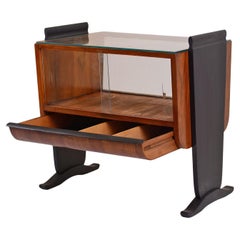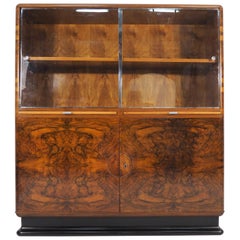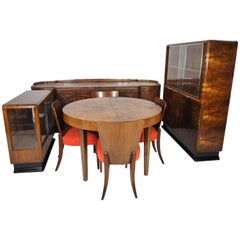Vitrine By Jindrich Halabala
Vintage 1930s Czech Art Deco Vitrines
Art Glass, Beech
Recent Sales
Vintage 1930s Czech Art Deco Vitrines
Walnut
Vintage 1930s Czech Art Deco Vitrines
Walnut
Vintage 1930s Czech Art Deco Vitrines
Walnut
Vintage 1930s Czech Art Deco Vitrines
Walnut
Vintage 1930s Czech Art Deco Vitrines
Glass, Wood
Vintage 1930s Czech Art Deco Vitrines
Walnut
Mid-20th Century Czech Mid-Century Modern Dry Bars
Glass, Wood
Vintage 1940s Czech Mid-Century Modern Dry Bars
Glass, Nutwood, Wood
People Also Browsed
Mid-20th Century Danish Mid-Century Modern Bookcases
Rosewood
Vintage 1970s Mexican Modern Animal Sculptures
Brass
Vintage 1950s Italian Mid-Century Modern Commodes and Chests of Drawers
Walnut
2010s Philippine Art Deco Side Tables
Shell
Vintage 1960s German Hollywood Regency Table Lamps
Metal
Vintage 1920s Dutch Art Deco Magazine Racks and Stands
Macassar, Oak
Vintage 1970s Italian Mid-Century Modern Wardrobes and Armoires
Leather, Felt
Mid-20th Century Mid-Century Modern Desks and Writing Tables
Maple
Vintage 1960s Japanese Mid-Century Modern Animal Sculptures
Metal
Vintage 1950s American Mid-Century Modern Coffee and Cocktail Tables
Mahogany, Cork
Vintage 1970s Italian Side Tables
Oak
Vintage 1960s Swedish Scandinavian Modern Figurative Sculptures
Iron
Antique Late 19th Century English Shelves
Bamboo
Mid-20th Century Italian Mid-Century Modern Vitrines
Wood
Vintage 1970s American Mid-Century Modern Desks and Writing Tables
Steel, Chrome
Vintage 1920s Dutch Art Deco Magazine Racks and Stands
Brass
Jindřich Halabala for sale on 1stDibs
Thanks to design lovers’ enthusiasm for Art Deco and mid-century modern furniture, and the increasingly competitive market for pieces by more famous creators, 20th-century Czech designers are making their way back onto the international stage. Foremost among these talents is Jindřich Halabala.
Halabala was one of the leading designers of a particularly rich period in Czech furniture history, when pieces were defined by Bauhaus functionalism as well as Art Deco influences. He was a cabinetmaker’s son whose training was almost wholly focused on woodwork, first at a state-run vocational school for woodworking in Valašské Meziříčí and later at UP Závody in Brno, where he ultimately became chief designer.
Halabala's alluring bentwood H chairs, such as the H269 and H237, and stylized ottomans have become classics, while his 1930s and 1940s sofas, tables and storage cabinets, with their sweeping curves, stylized geometry and dark, richly grained wood, embody the best of Art Deco furniture design, a style that was brought to worldwide attention at an exhibition in Paris in 1925.
Halabala's work, which was manufactured by the likes of Thonet and UP Závody, is seen by some as the segue between early 1900s Czech Cubism and the modern style that dominated the mid-century years.
Find a collection of vintage Jindřich Halabala furniture today on 1stDibs.
Finding the Right Vitrines for You
Why not give your precious collectibles the case pieces they deserve? Antique and vintage vitrines can be used to safely store and display your most treasured objects.
While they were initially used to display relics in churches or to preserve specimens for scientific observation, vitrines are best known for their place in retail spaces and museums. The name for these glass display cases comes from the Latin word “vitrum,” meaning glass, as well as the Old French word “vitre,” which also refers to glass. Instead of simply showcasing collector’s items on shelves, you can bestow extra importance on them by displaying them in a vitrine for passers-by to observe and admire.
Not all vitrines are created equal. Over time, furniture makers have explored different shapes and sizes for vitrines. A display case you’ll find in a retail store will likely look drastically different from what you’ll see in a museum or art gallery. A vitrine in a shop is likely there to best market specific wares to the general public, while in museums there is usually a range of different vitrines intended to house and protect single objects or to display a grouping of artifacts.
Most of us have an antique, new or vintage case piece in our home. Though the terms “case pieces” and “case goods” may cause even the most decor-obsessed to stumble, these furnishings have been a vital part of the home for centuries. Any furnishing that is unupholstered and has some semblance of a storage component — cabinets, dressers, buffets — may be properly termed a case piece.
Mirror-backed vitrines, which refer to cases that usually feature shelved and mirrored interiors, are a most appropriate home for your jewelry or decorative objects. Adding such items to a vitrine already suggests that there is an irreplaceable preciousness to the case’s contents, and the mirrors will emphasize as much as well as refract more light to render the display eye-catching.
On 1stDibs, find a wide variety of antique and vintage vitrines to protect and preserve your most prized items. The collection of mid-century modern vitrines and Art Deco vitrines is mostly inclusive of those built with a wooden frame, but there are many other types to choose from as well. It’s time to give your collectibles a good home!


